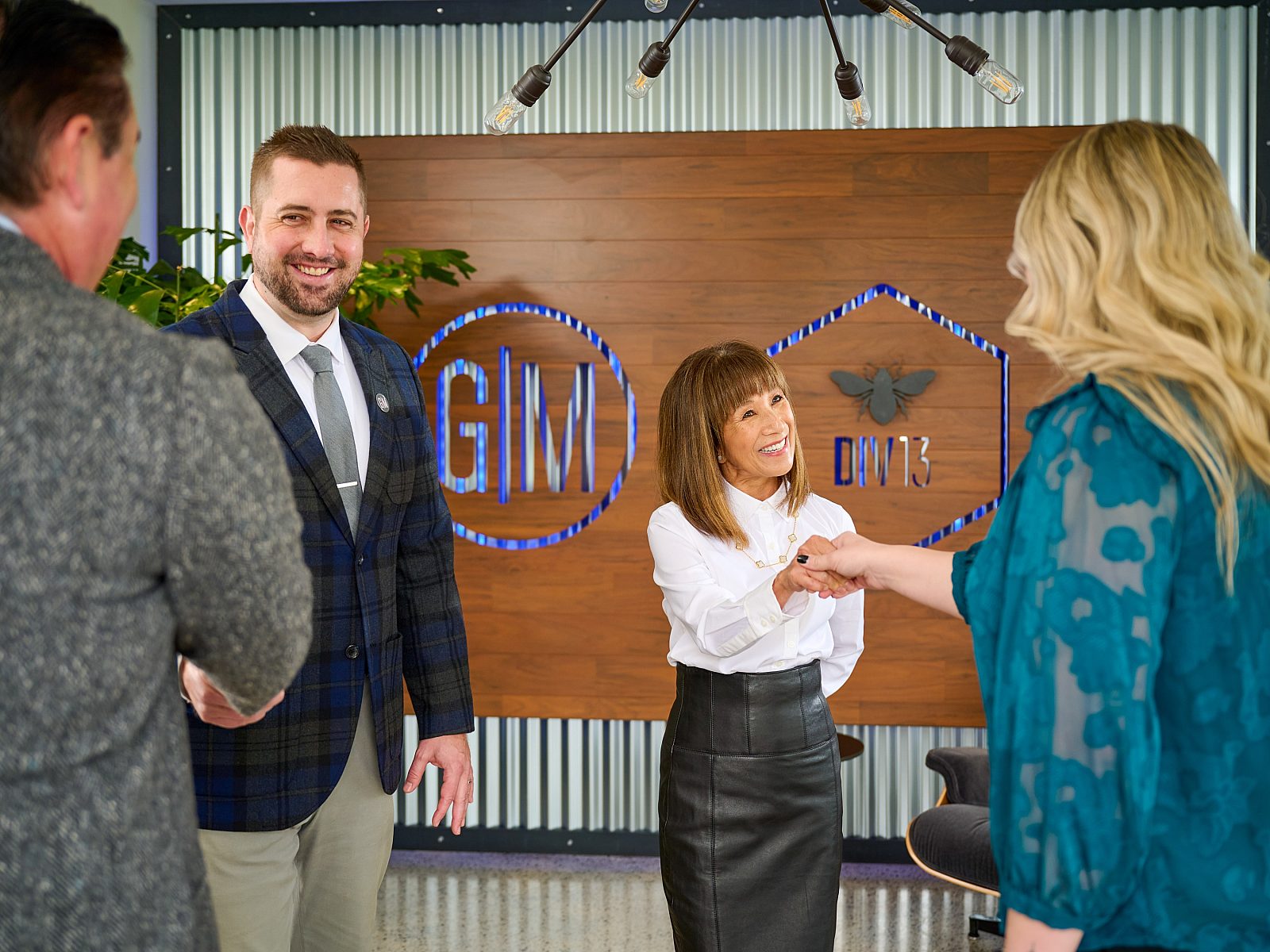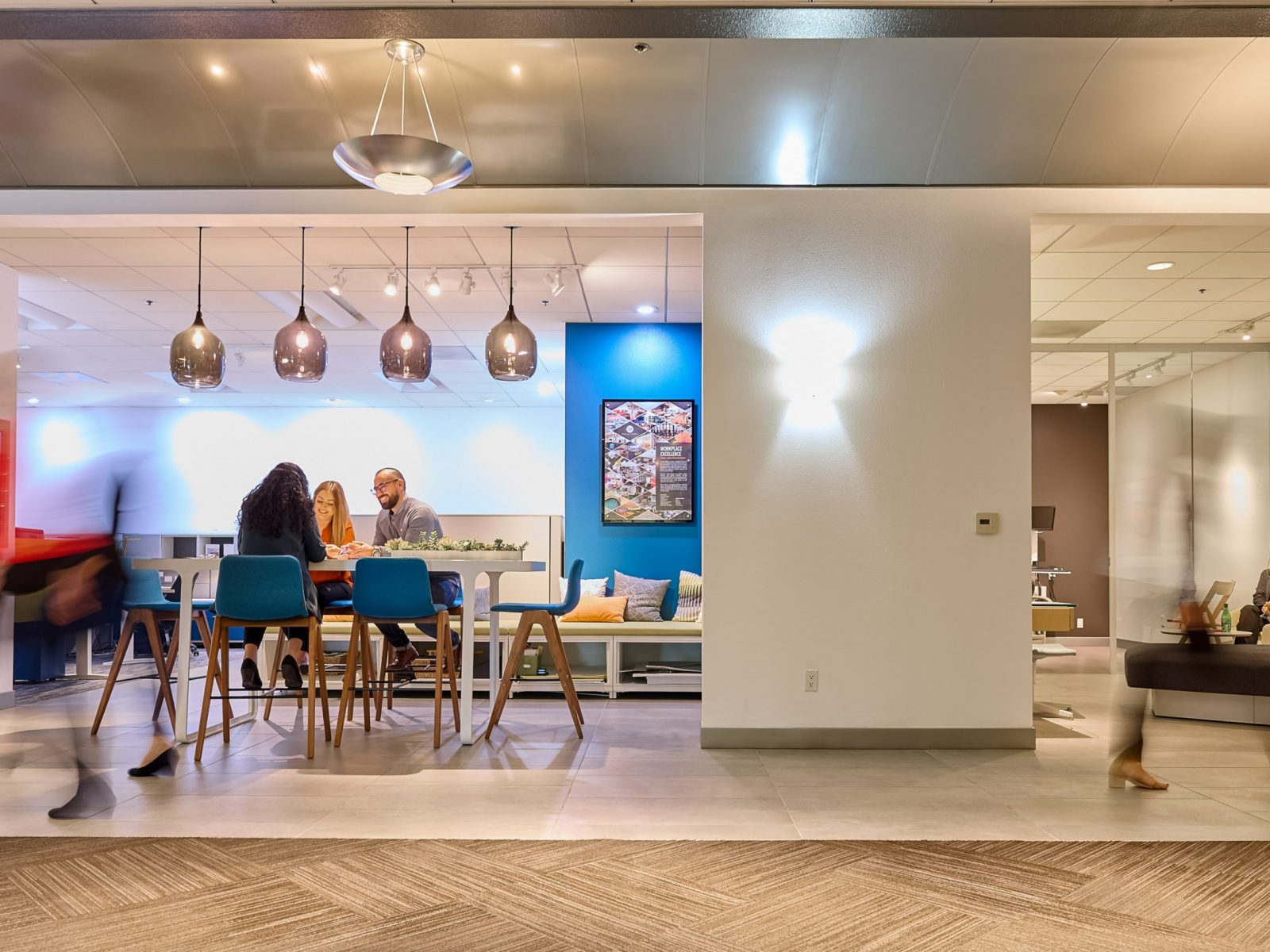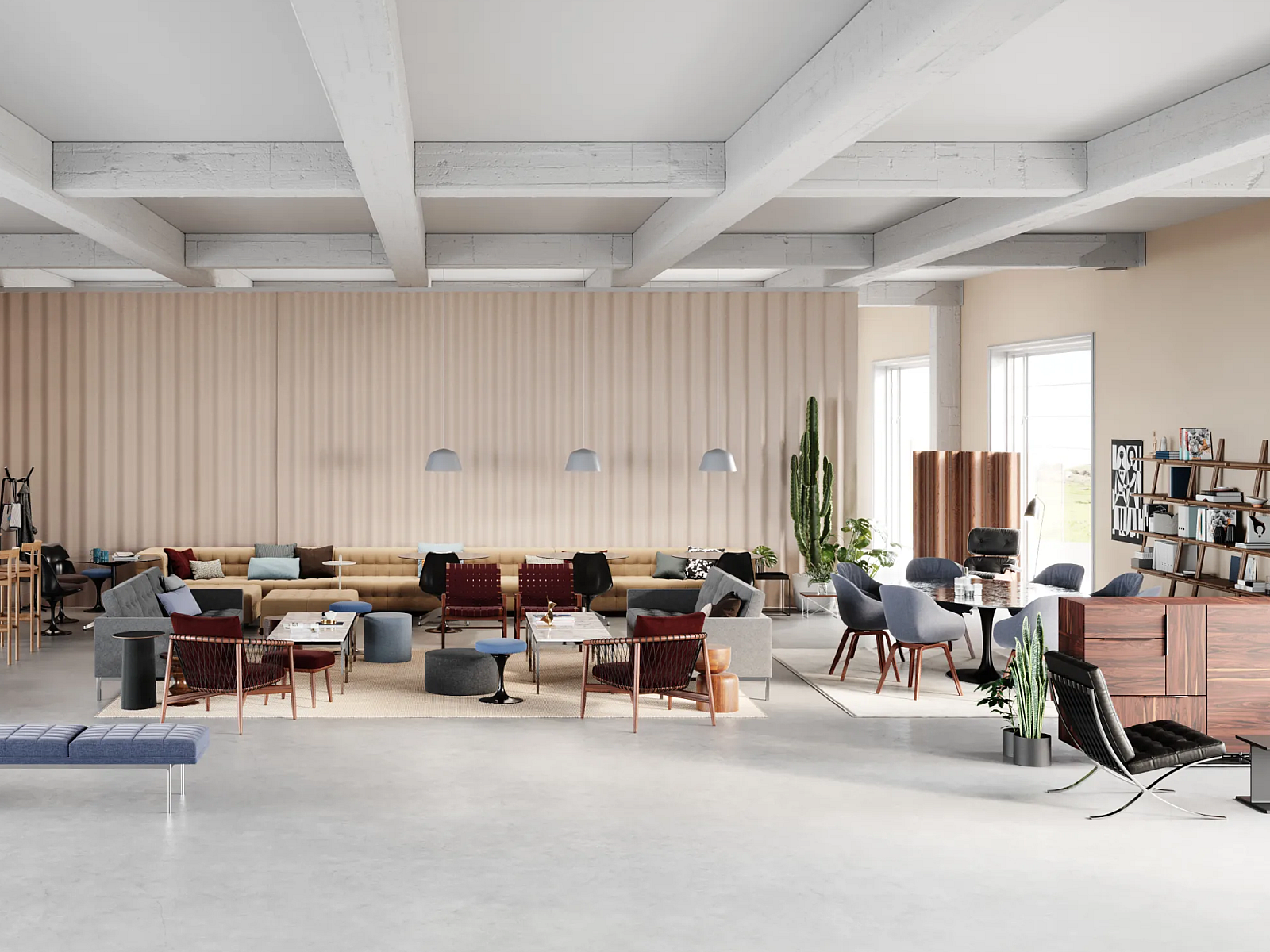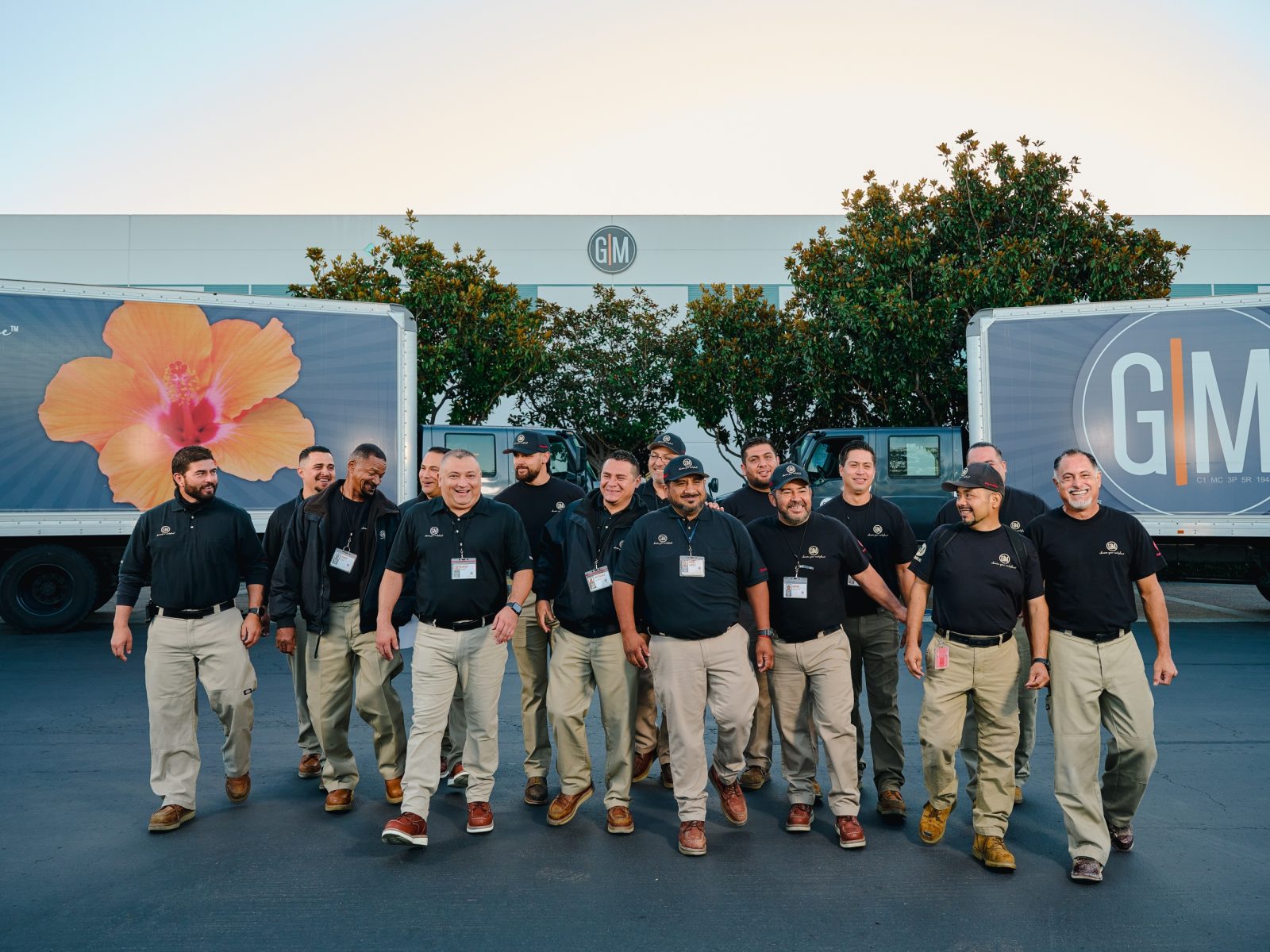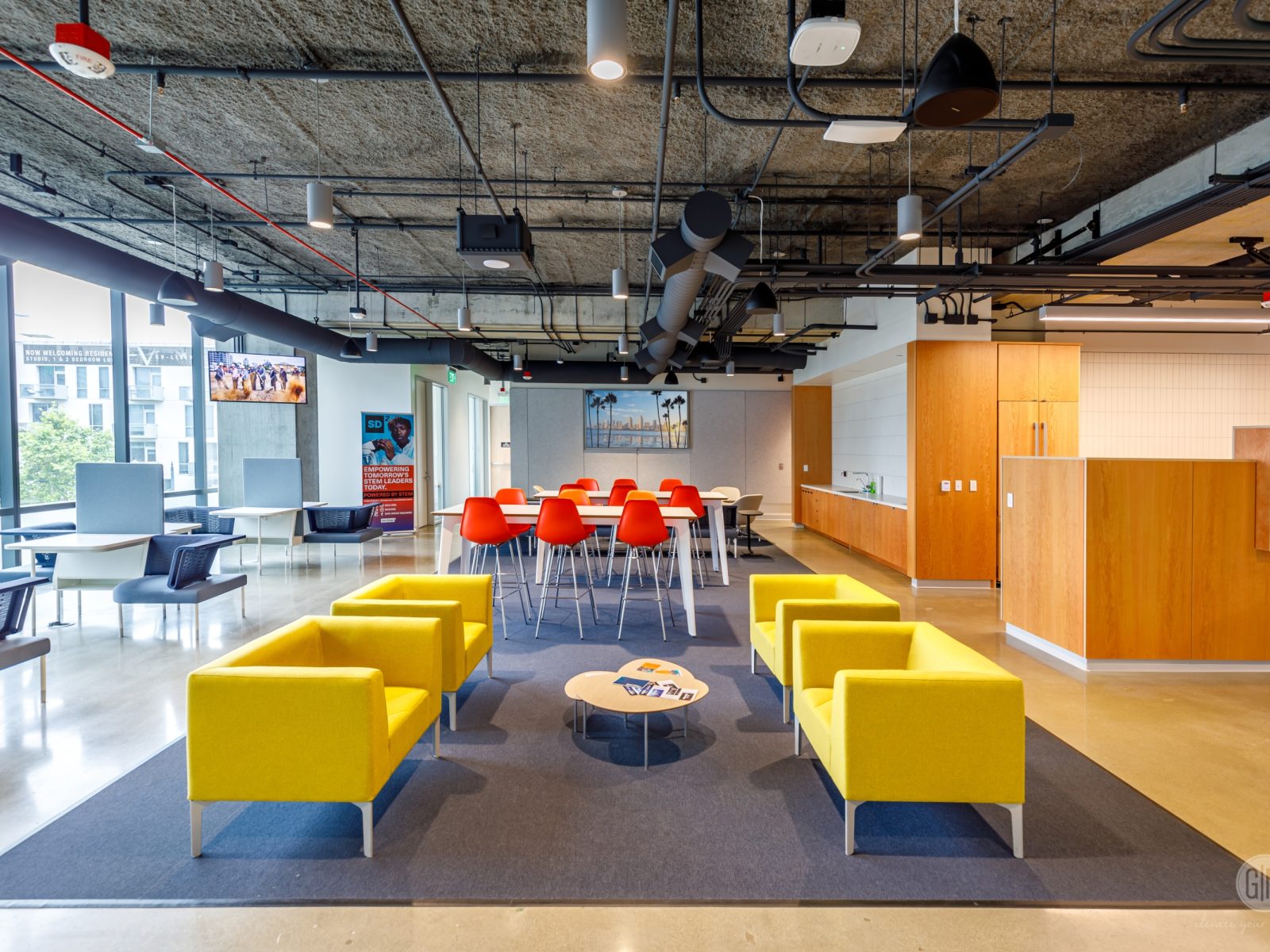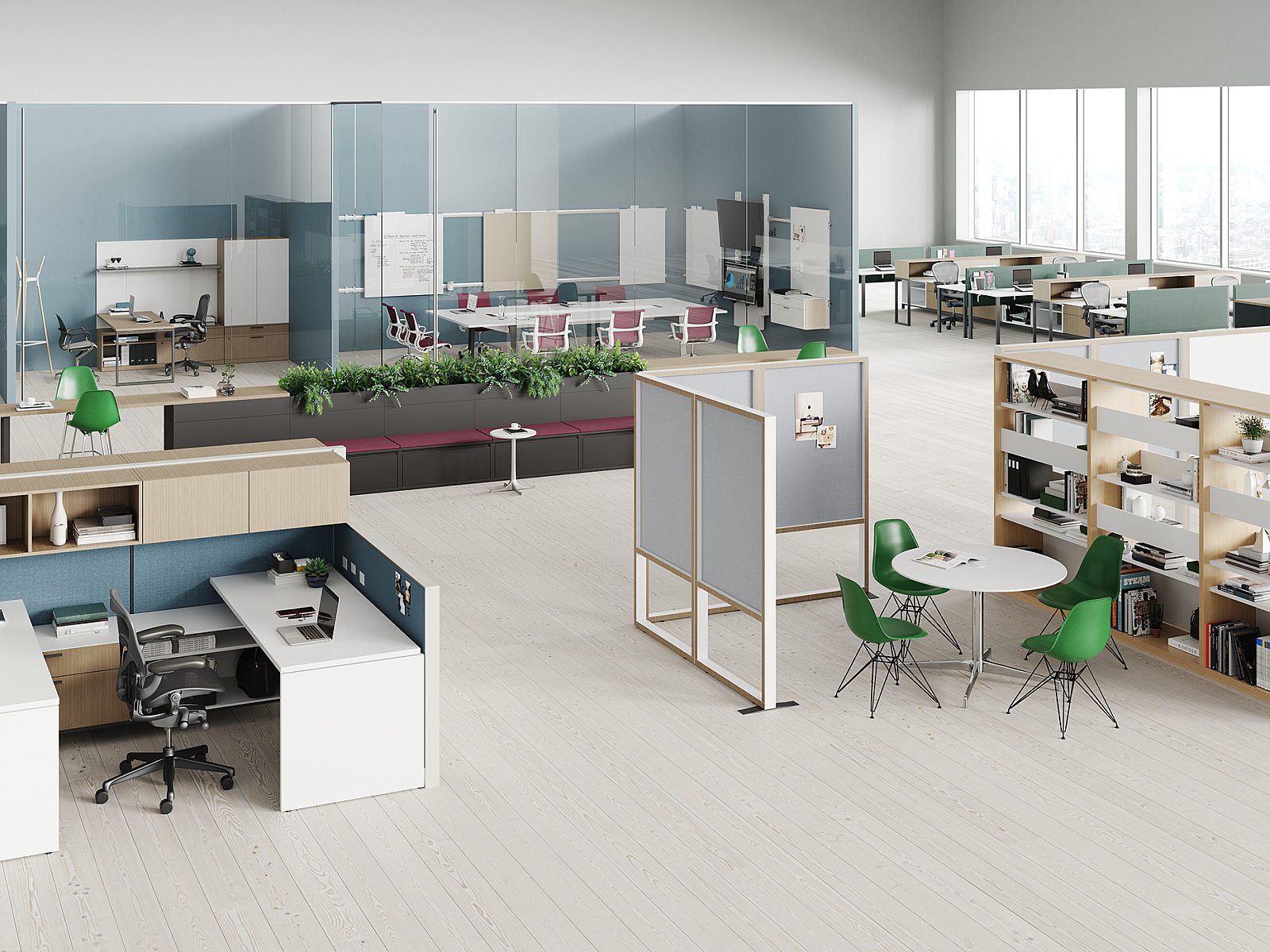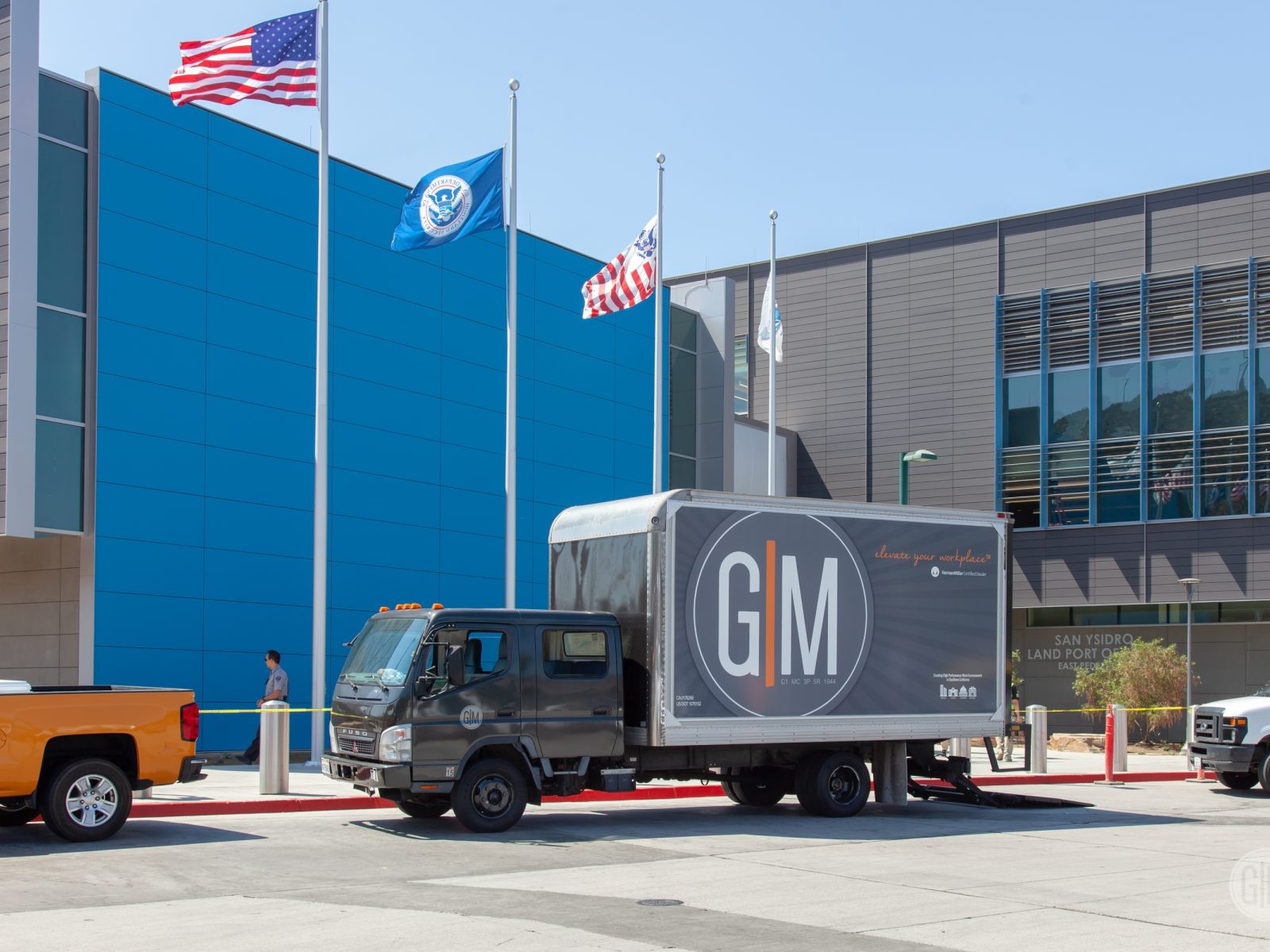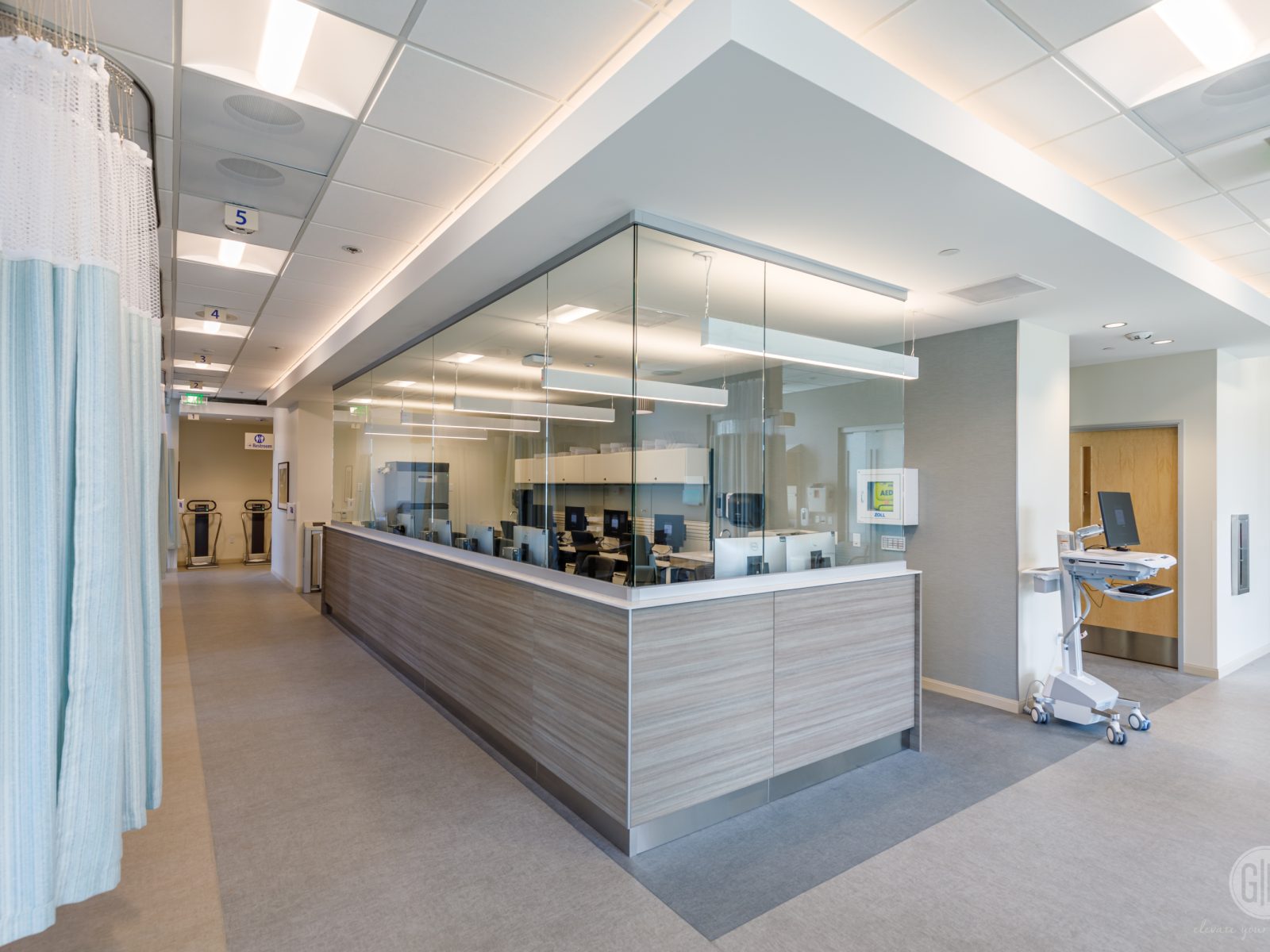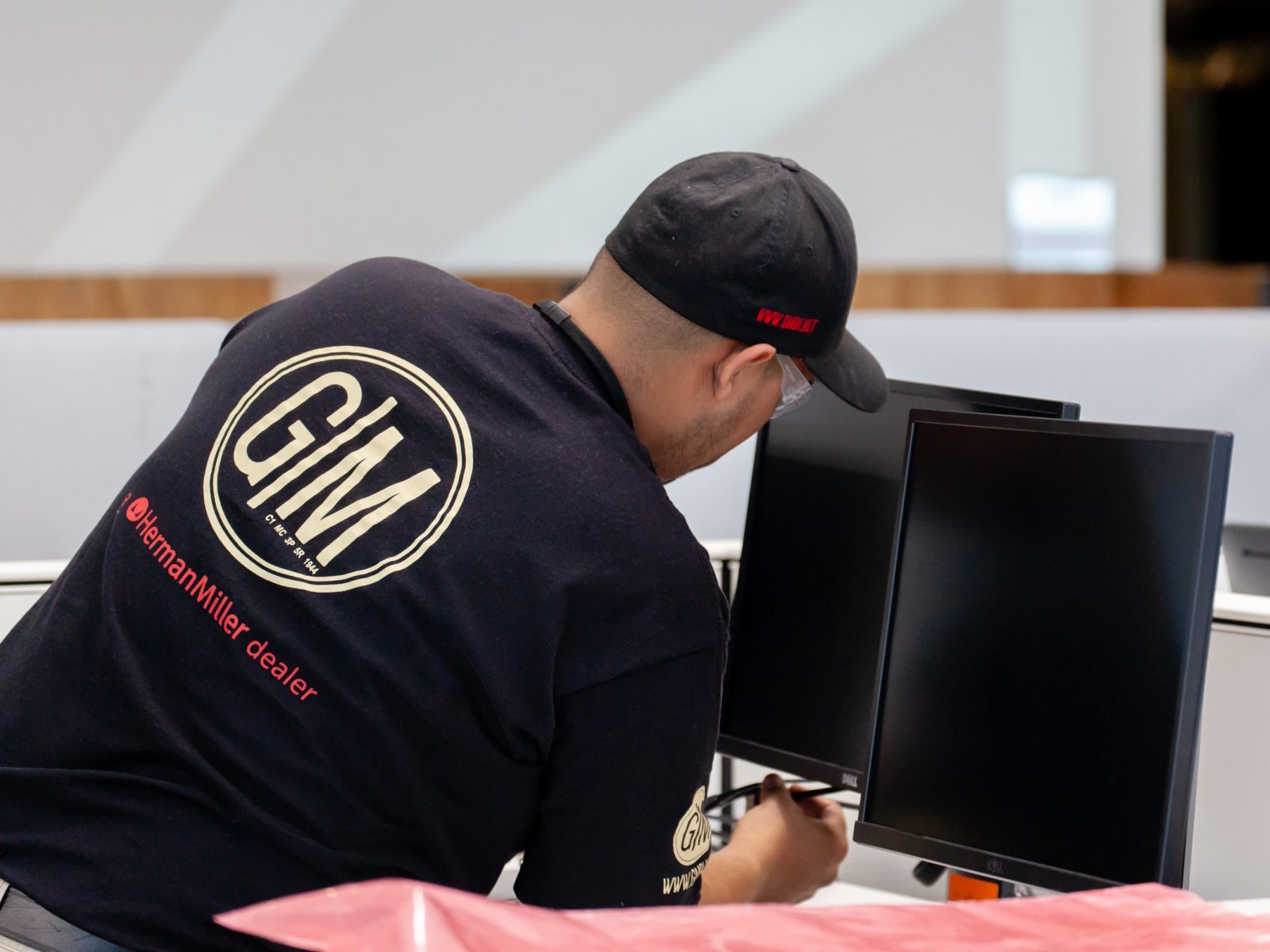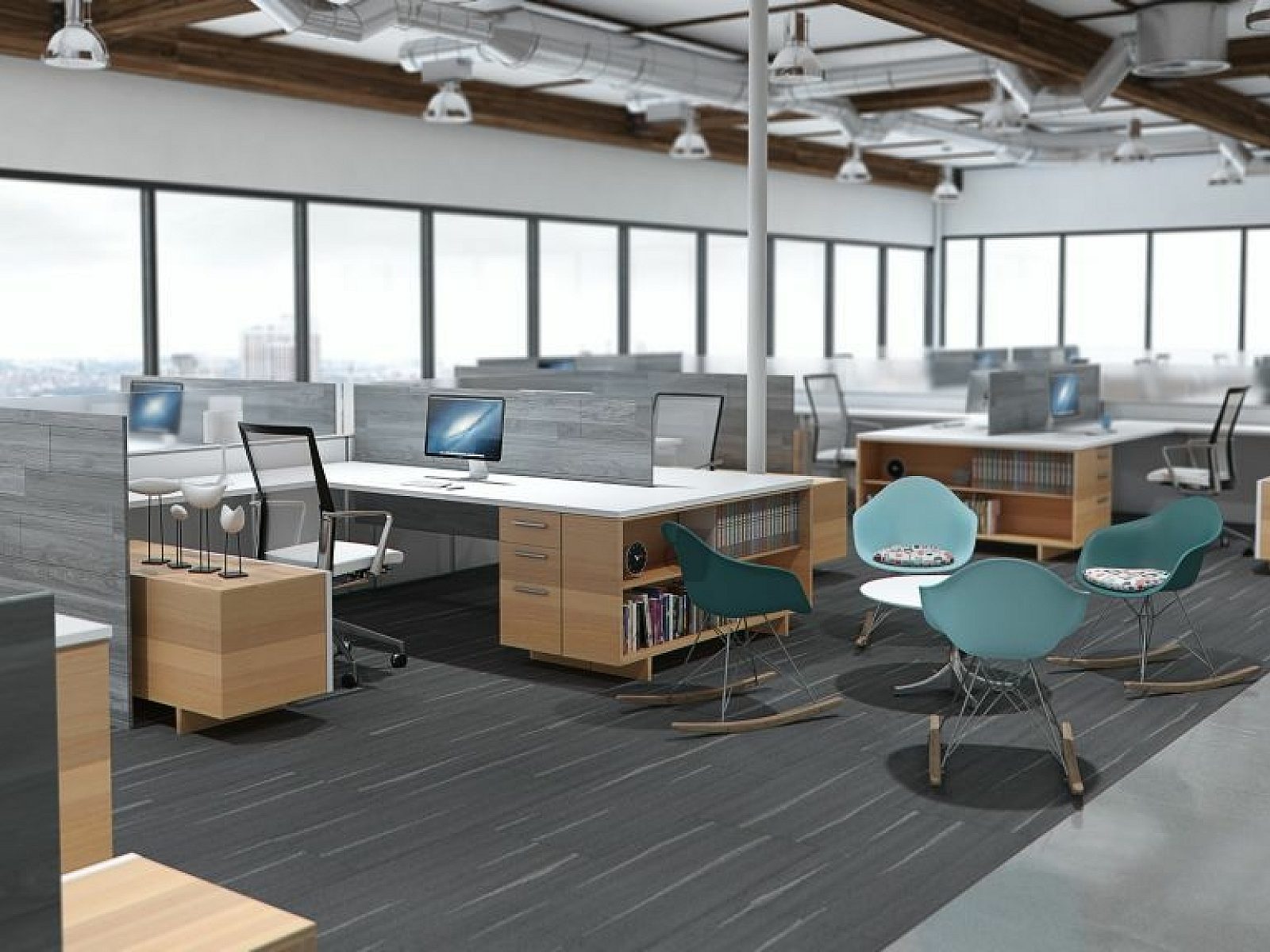How Workplace Design Can Help Attract Gen Z
To appeal to Gen Z, companies are encouraged to evolve their workspace not only aesthetically but functionally. Salma Siddiqi of AURA explores how to do it.

- Generation Z, the youngest working generation, is expected to make up 27% of the workforce by 2025.
- They are hyper-connected, digital natives, with access to a wealth of online knowledge on diverse working styles, office layouts, and workplace amenities.
- To attract Gen Z workers, Salma Siddiqi of AURA explores how and why companies must evolve to meet the needs of the growing workforce.
This article was written by Salma Siddiqi and was originally published on Work Design Magazine.
The most recent generation to enter the workforce is Generation Z. Born between 1997 and 2012, Generation Z currently makes up 30 percent of the world’s population and is expected to make up 27% of the workforce by 2025. This younger generation is already challenging the way earlier generations view work and are contributing innovative, thought-provoking ideas. It is significant to notice that individuals from Gen Z differ from preceding generations in several ways. Generation Z are hyper-connected, career-driven digital natives. Due to these traits, the internet, and social media, Gen Z has access to a wealth of knowledge on diverse working styles, office layouts, and workplace amenities. Owing to their extensive exposure to various employment options, Generation Z is not accepting subpar working environments.
Companies that want to attract Gen Z when they enter the workforce are encouraged to evolve their workspace not only aesthetically but functionally that appeal to Gen Z. Otherwise, they risk losing them and having to look for employment elsewhere. The question now is how should businesses prepare for Generation Z? What strategies can firms implement to create workplaces that meet the needs and desires of this new generation?
Read on to learn about the specific characteristics that distinguish Gen Z, what they want from a company, and how organizations can design a workplace that meets their expectations.

Characteristics of Gen Z
- Digital Natives – With limitless access to information at their fingertips, they are highly exposed to just about everything or can easily find details about anything.
- Highly interconnected – grown up with the knowledge that they can communicate with anyone in the world at a moment’s notice through social media.
- Concerned about mental health and wellness – growing up in an age of increased stress and anxiety caused by social media, Gen Z pays close attention to their mental health and are actively bringing more awareness on the matter.
- Career driven with financial goals – highly educated individuals who desire a fulfilling career that serves the world, personal development and financial security.
What Gen Z desires from an employer:
Flexibility
In the era of hybrid and remote work modalities Gen Z desires flexibility when it comes to work. They entered the workforce at a pivotal moment in history where full-time remote work was not only an option but necessary. The pandemic revealed the potential for people to have greater flexibility in terms of alternative work models and styles. Because Gen Z entered the workforce during or after the pandemic, they never had the opportunity to establish a steady routine of working 40 hours per week in an office, let alone having to commute to an office. As a result, Gen Z desires greater flexibility on when and where they work. As the first digital native generation, Generation Z is incredibly technologically savvy and can quickly adapt to a remote or hybrid working method. Unlike earlier generations that struggled to adapt on how to collaborate online through virtual calls or present effectively, Generation Z can efficiently work from anywhere.
On the contrary, finishing a degree or starting a job isolated in your bedroom also affects how often you want human interaction. Research has shown that Gen Z wants to come into the office, even if it is just once or twice a month. Personal development and enrichment are crucial for most people starting their professions. And, without the benefit of spending time in a face-to-face workplace amongst peers, many Gen-Zer’s are concerned about falling behind. As a result, Gen Z is looking for employers who prioritize work-life balance, remote working, and flexible hours.
How to incorporate flexibility into office design
Having offices that are bookable or shared is a wonderful way to supply employees with choices on how they work. Having bookable or shared workspaces creates spaces for individuals who may want to come to the office and prioritize focus time with the ability to step out and collaborate with colleagues. Furthermore, traditional hierarchies in space planning are reduced because not everyone will have a designated desk and the best office real estate spaces can be used and booked by everyone. Moreover, Flexibility can refer to more than just being able to work from home. Offices can provide employees with flexibility in having different seating arrangements not only for downtime. We are all aware of the different seating arrangements to shake things up but what gets missed is how are these seating arrangements being used? Is there a need for a mobile whiteboard? Power requirements either in the furniture itself or nearby? There are a range of factors to consider when setting up a flexible workplace, but Gen Z will appreciate the ability to work remotely and in a variety of office environments.

Attention to Mental Wellbeing and Wellness
Generation Z is particularly concerned about mental health. Over 50% of 18-24-year-olds have reported at least one mental health issue, such as anxiety or depression, as per the research carried out by the Center for Disease Control. But unlike their predecessors, they are taking a stand and bringing awareness to their mental health. Burnout and stress associated from a lack of mental health care are not things that Generation Z has been taught to tolerate. Generation Z wants a healthy work-life balance and prioritizes their mental health and wellness. They are opposed to working excessive hours and overworking themselves to bolster a company’s financial performance. Therefore, companies must not only take part in raising awareness about wellness and mental health issues, but also invest in initiatives and services that address the issue. There is no one-size-fits-all answer; instead, it requires a long-term commitment that focuses on uplifting employees and how they feel about their work.
How to improve mental health in the workplace
Companies and management should want to show their Gen Z employees that they are embracing mental health efforts. Implementing an inclusive “wellness room” is a wonderful way to start. A wellness room is a designated, secluded area in your office where employees can take time out to tend to their own personal health needs. It can take many forms and must be inclusive of all your employees’ needs. Some examples that companies have implemented in a wellness room include a prayer room, yoga room, nap pods or simply a space to wind down and read a book. Think of it as a space that supports what you would like when you need a break.
Incorporating extra support and gathering areas in the office design is another technique to supply mental health support by encouraging socializing. Employees’ mental health can benefit from game rooms, cafeteria-style lunchrooms, or other locations where they can break their routine. Employers can boost productivity, reduce burnout, and foster a better work-life balance for employees by allowing them to take time away from work to focus on their wellness and mental health.
A Technologically Savvy Space
Generation Z grew up in the age of connecting digitally. As a mobile-first generation, Generation Z is tech-savvy in all aspects of their lives and see technology as an extension of themselves. As a result, they will blend better with forward-thinking companies interested in implementing innovative technologies. Gen Z is not interested in working for a company that does not show the willingness to adopt change and is still trapped in the prehistoric era of solely using paper and pencils.
Technology in the office
Companies should improve their digital employee experience to satisfy Generation Z’s digital literacy and needs. Choosing a technology-friendly office design that incorporates communal tablets, interactive screens, and other tech advancements that make work smoother is a fantastic way to show that your company is trying to optimize the workplace. Furthermore, companies can utilize tools to help keep the office functioning better such as desk booking applications.

Combination of both private and collaborative workspaces
The pandemic has significantly affected how Generation Z wants to work. Working remotely in the comfort of their own home in solitude allowed them to appreciate private spaces where they can engage in periods of focused work. They have perfected the art of remote work, and they, like their Millennial counterparts, also value collaborative work. Growing up in a hyper-connected world eased through social media, Gen Z are sociable and finds pleasure in collaborating with others and coming together to solve problems.
Designing an office with a balance of private and collaborative workspaces
Striking the correct social-private balance in the workplace and other aspects of your office’s physical architecture is critical. For an appealing workplace design for Gen Z, companies can blend practical workspaces that support individuals’ ability to concentrate alone and open spaces that increase collaboration. Employees can come up with innovative ideas that they can subsequently present to the rest of the workforce by spending time alone and gathering their thoughts during that concentrated period. Combining privacy pods, quiet private desk spaces, and open floor plans can help employees find a happy medium. Employees will be more motivated to come into the office if they know they can work individually while also communicating readily with team members in an informal setting.
What does this mean for employers?
Overall, Gen Z will be willing to demand increased customization in their career journey. A switch in mindset will be needed for organizations to recruit and retain the best and brightest of the generation. To attract Gen Z, companies must be willing to evolve to meet the needs of the growing workforce. This entails actively trying to enhance the workplace and taking the time to listen to what this new generation wants, since their perspectives are valuable and will aid in the overall creation of a better working environment.


